REBECCA RENNIE BIG BOARD: SMALL SCHOOL 150 (Page 3)
By Rebecca Rennie
As with every draft class, there is exceptional talent to be found outside the FBS. This presents my Top 150 of those small school prospects. Whether used pre-draft or after your team has picked up one or more of these players during or after the draft, I hope this provides some useful information or reference.
The first five pages provide profiles on the Top 50 small school prospects. Page 6 contains brief notes on the next 25. The final page contains the full Top 150 Big Board as a list.
There are a lot of players on this big board, many of whom will appear lower down on the list. I fully believe though, that with the right opportunity, every player included has the potential to be a successful pro.
In fact, there are countless other prospects that I know I will have missed. Unfortunately, this was a one-person operation without a full scouting team to hand. I’ve tried to get to as many players as possible, but had to get this posted eventually.
All draft boards are subjective and will have it’s share of misses along with hits. That’s part of the fun though, it would be dull if everyone was working off an identical board! Thanks for taking the time to look and enjoy the 2020 NFL Draft.
Note: HPFA = High Priority Free Agent Grade.
21. Luther Kirk, S, Illinois State. Grade: 7th Round
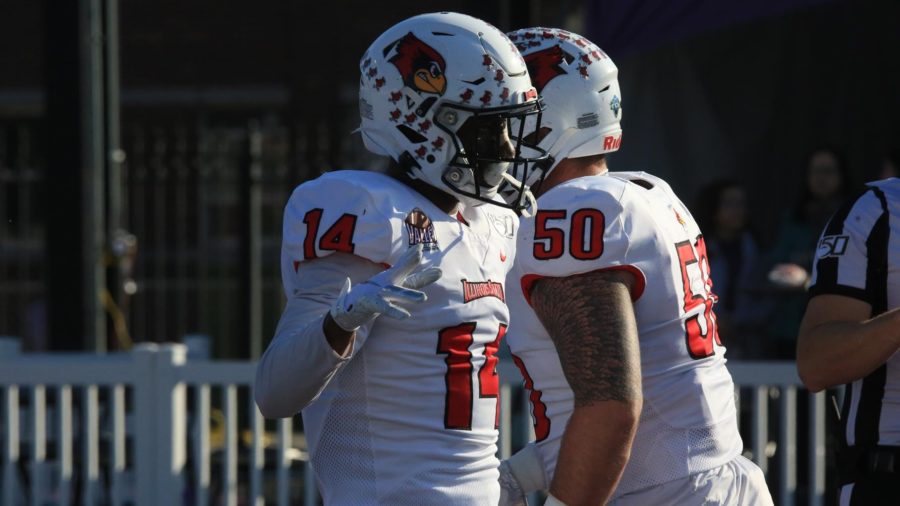
Height: 6’0”. Weight: 194lbs.
Pros: In an NFL where coverage skills and versatility in the secondary are highly desired, Kirk has valuable skills to project favorably to the pros. While he didn’t register any interceptions as a senior, he picked off 5 passes as a junior in 2018. Comfortable navigating the field in all directions, forward, backward and laterally, the Redbirds DB gets involved in all areas and levels of the field. There’s a smoothness and efficiency in the way he covers ground. He may not explode from a standing start but has sneaky good range to his coverage. There’s more than enough closing speed and recovery speed to his game. In addition to deploying in the deep middle of the field, Kirk can line up over the slot and handle man coverage duties. Steady and controlled in his backpedal, he demonstrates sound technique for spot corner and nickel assignments.
At the catch point, Kirk is aggressive in attacking the ball and positions himself well to make plays. His vertical stands out to high point the ball. The lower body explosion was proven at his pro day with a 39” vertical and 10-6 broad jump. His solid all-round pro day also included a 4.57 dash and 7.14 3-cone. Kirk’s versatility extends to his play in run support and around the box in general. He gets stuck in around the line of scrimmage, popping up with a handful of sacks and racking up stops. His senior stats include 89 tackles, 4 TFLs, 3 sacks and a forced fumble, along with 6 pass breakups.
Cons: Kirk is a little slight for the position and lacks ideal length with shorter arms and wingspan. Though he’s a more-than-willing tackler, there’s modest power and impact behind the hits. There’s not that physical and imposing presence for the position. It’s not overly concerning however, as his coverage skills are what ought to earn him his role at the next level.
Though a fluid mover, the Illinois State defensive back isn’t overly dynamic or explosive. Much of his coverage play is positive, however, there are some poorer reps. There are several examples of being beating early in man coverage situations from fairly simple releases. It’s more a consistency concern though, as he’s proven skilled here in plenty other situations.
Wrapping Up: When looking for value late on Day 3, Kirk has clear traits that give him a chance to contribute. His well-rounded game can be applied at multiple spots across the secondary. His competence in coverage gives him a pathway to a roster spot that is often difficult to find in the latter stages of the draft.
22. Chris Williams, DL, Wagner. Grade: 7th Round
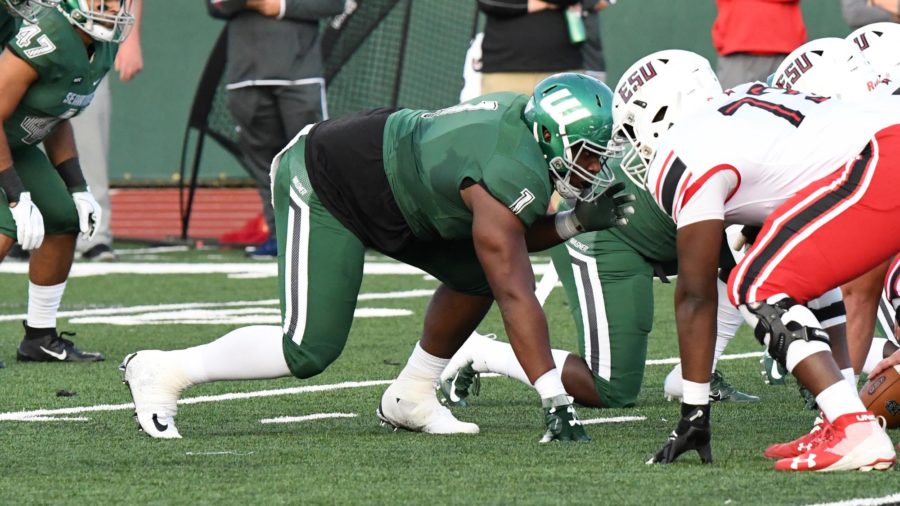
Height: 6’2”. Weight: 302lbs.
Pros: Williams thrived as a senior under D-line coach and former pro Terrance “Pot Roast” Knighton. After reportedly doing significant work in the weight room to get better weight on his frame and improve his conditioning, it paid off with by far his most impactful and productive college season. Williams was active in totalling 62 tackles, 11.5 TFLs, 4 sacks and 3 forced fumbles among his numbers in 2019. His listed size may not stand out but Williams has very good length (34.5” arms), big hands and plenty power at the point of attack.
He does much of his best work versus the run. He plays with aggressive intent and delivers a rocking punch on initial contact. Working well against the flow of the offensive line, Williams tracks ball carriers, shedding blocks effectively with timing to position himself to make plays. At other times, his unselfish role as a space eater allows teammates to get home and take more of the glory. Williams shows good leverage, a sturdy wide base and coordination through his upper and lower body. He is consistent keeping blockers off his frame by getting maximum extension and good hand placement on contact
Cons: His strength is good enough for the pros but at a higher level of athletic competition, he may not stand out. The ceiling may be fairly modest as a depth player. It’s unlikely for Williams to offer a big impact in the backfield at the next level. Williams doesn’t show too much at this point in terms of sophisticated rush moves, though he doesn’t appear to be asked to rush from his interior position often. He looked dominant as a senior in the Northeast Conference of the FCS but hasn’t had much experience against higher competition.
Wrapping Up: Overall, Williams is not a particularly flashy player, but does his job in the trenches with reliable technique and execution. He may have a fairly low ceiling but has a depth role to offer. Despite modest size for the position, he has length and shows the combination of technique and core strength to hold up at the pro level. A late pick in the draft is a possibility, but if not, ought to be a high priority free agent. NFL Comparison: Justin Jones (LA Chargers).
23. Lachavious Simmons, IOL, Tennessee State. Grade: 7th Round
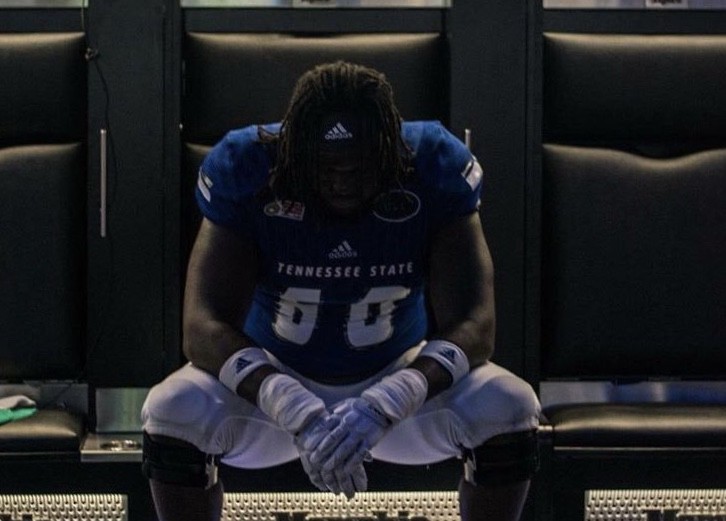
Height: 6’5”. Weight: 304lbs.
Pros: Simmons offers good next-level length in his frame and 35 1/8” arms. The film is often highly entertaining as one of the nastier blockers watched among this class. There’s a lot to love about the physicality and aggression, particularly in the run game. Simmons delivers a strong punch at the point of attack, always looking to drive his legs and finish. Burying defenders to the turf happens fairly frequently when taking on some often-outmatched opposition.
Executing combination blocks, the second man usually gets the same treatment as the first. Quickly out of his stance, the Tennessee State lineman is a useful pulling guard and lead blocker. While a better run blocker than in pass pro, he uses his length to his advantage in pass pro and generally sustains blocks. The Tigers guard is passionate about the game, works hard in the weight room and plays with a chip on his shoulder. He took the opportunity to perform at the Gridiron Showcase All-Star event and flashed well at times during scrimmages.
Cons: The length and physicality are great, but Simmons will likely require additional bulk on his frame. Facing a higher quality of opposition in the pros, he’s a little lighter than ideal currently. Given his weight room work ethic, this shouldn’t be an issue, and has the room to add good weight. Simmons can be a touch slow in his changes of direction and general lateral agility. His ability to mirror in pass protection and to handle counters and late blitzers can be affected. Simmons flashes good balance but at other times the balance, footwork and control let him down.
Wrapping Up: While he doesn’t appear to be as prominently discussed as many small school prospects, Simmons has appealing projectable traits for the pros. Adding bulk and consistency in pass protection are areas to develop. The small school lineman’s length and aggression stand out as positives to work with.
24. Matt Cole, WR, McKendree. Grade: 7th Round

Height: 5’10”. Weight: 197lbs.
Pros: He’s a receiver by trade, but much of the appeal with Cole over the multitude of small school receiver prospects is his special teams contributions. Cole is a phenomenal standout in the third phase of the game. Should he make a roster, his work on coverage units and as a gunner and returner are likely going to factor in. With 4.4 speed, excellent angles and hard-hitting despite a smaller frame, he could become one of the better gunners in the league. He returned both a kick-off and a punt for a touchdown in 2019, after 2 kick return TDs in 2018.
As a receiver, Cole dominated as a big play threat at the Division 2 level. The Bearcats star totalled 12 receiving touchdowns and averaging nearly 22 yards a catch. He’s at his best after the catch where he exploits space in the open field, beats defenders to angles and finishes. More than just long speed, Cole has shiftiness over short areas combining with sharp route running to create separation. Though smaller, he can high point with his 37.5” vertical.
Cons: There’s not a great deal to cite as concerns. He may not be the biggest but is well-built for his size and explosive in his jumps. As with all other small school prospects, there’s a question of competition faced and stepping up. Outside of those, there’s little to critique on film. His routes are nice at this stage but there’s room for further refinement.
Wrapping Up: Cole has a stout frame that is almost of a running back build that reflects his skills with the ball in his hands. While he can provide a complimentary role on offense that in itself could be roster-worthy, his added abilities as a special teams demon is a value not to be overlooked. NFL Comparison: Russell Gage.
25. James Robinson, RB, Illinois State. Grade: 7th Round
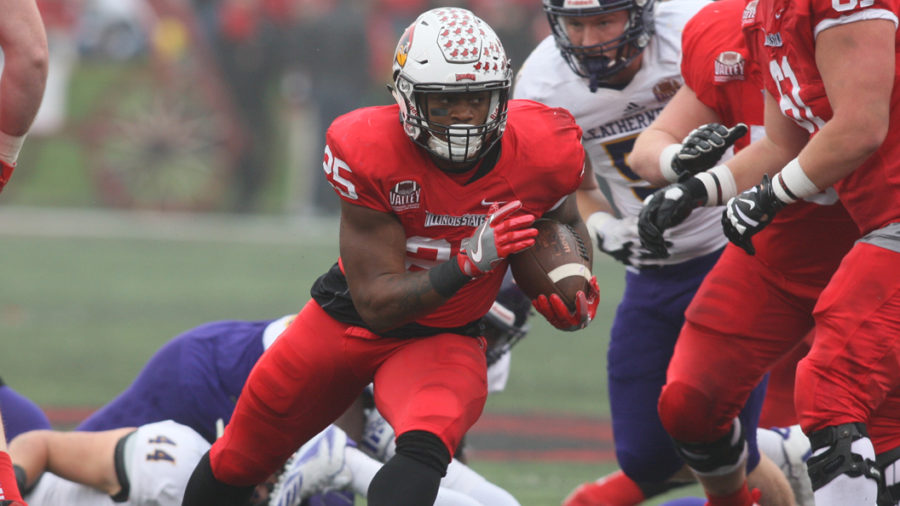
Height: 5’9”. Weight: 219lbs.
Pros: Robinson has outperformed his initial 2-star recruiting rating (Rivals and Scout). The Redbirds standout has exceptional production that is a major factor in the NFL attention to this point. His senior season saw him total 1,899 rushing yards in 2019 at 5.22 per carry and 18 touchdowns. That contributed to an appearance at the East-West Shrine event and the only small school running back invited to the Combine. A power-through-contact runner, Robinson thrives on lowering his shoulder and driving for yards after contact.
Though he lacks top speed, once free on the second level he is tough to bring down. He showed at the Combine that he has lower body explosion with a 40” vertical. The violence on the boundary to finish runs typifies his physical style. His stout, broad build will be able to continue to handle a high workload should he earn that role. Robinson is built with a low center of gravity that contributes to his good balance and advantageous pad level. His decision making and vision are generally good.
Cons: His Combine dash of 4.64 was among the slowest among participants and reflective of his film. There is a lack of overall speed in Robinson’s game. As a result, he is corralled in the backfield more often than wanted. Though his offensive line was notably overmatched, Robinson struggled in an opportunity against FBS opposition in Northern Illinois early in the 2019 season. The Illinois State prospect often wants to head laterally to the edges but will struggle to find success heading outside in the pros. He hasn’t been utilized much at any point as a receiver out of the backfield. His contributions to the passing game in 2019 led to 16 receptions at only 5 yards a time on average.
Wrapping Up: The production is good but it’s difficult to locate much in Robinson’s game, skills and traits that stands out in order to replicate his success at the small school level. He’s well built, tough and physical, which could earn him a roster spot, but not a great deal to bang the table for. He should be drafted but would expect it to be late on. NFL Comparison: Peyton Barber.
26. Earnest Edwards, WR, Maine. Grade: 7th Round
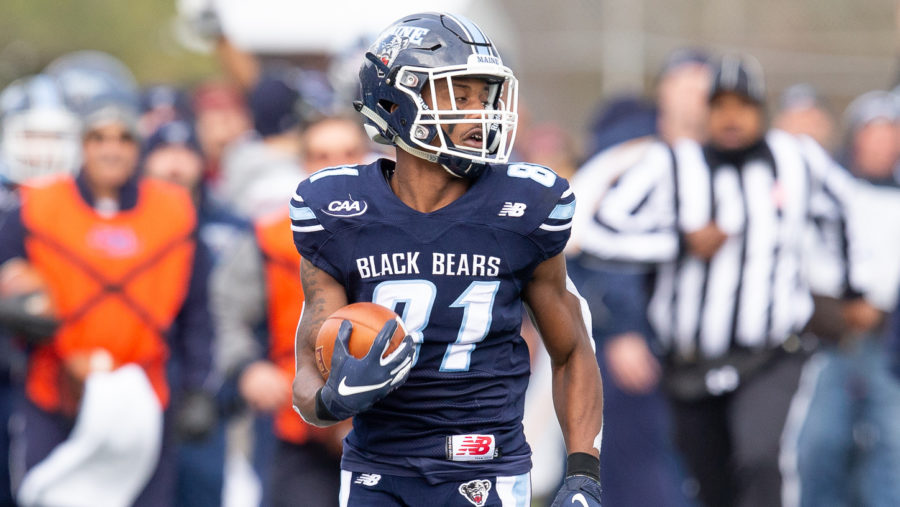
Height: 5’10”. Weight: 175lbs.
Pros: Edwards wins through speed and dynamic movement. His translatable athleticism and agility include deep speed and short area quickness in equal measures. Featuring good initial burst out of his stance, the Maine playmaker regularly leaves covering DBs trailing should they fail to get hands on him early. Edwards is deadly from a free release. The footwork and suddenness show up in his route breaks and his success with double moves to flat-foot coverage.
Targeted both short and deep, he’s a threat on multiple levels and situations. Exploiting space, he eats up yardage in run-after-catch opportunities. When targeted down the field, Edwards is reliable in his ball tracking and focus at the catch point. There’s a couple missed opportunities on film but overall shows good hands to bring in catches within his reach. Playing big, he’s a battler under tight coverage. His dynamic playmaking was utilized in college as much as possible, including with backfield handoffs and trick play passes.
Cons: The slight frame is noteworthy as a concern. That said, his methods of winning makes Edwards difficult to get hands on him in the first place. How he handles attempts to disrupt his routes from press will be important. He’s competitive in this area at the FCS level but will see greater challenges in this aspect by elite competition in the pros.
Wrapping Up: Players of Edwards skill set have become more prevalent in the pros in recent years, with leaner builds less of a concern. The Black Bears playmaker is a versatile and dynamic weapon and a big-play threat on any touch. NFL Comparison: Keke Coutee.
27. Jacob Knipp, QB, Northern Colorado. Grade: 7th-HPFA
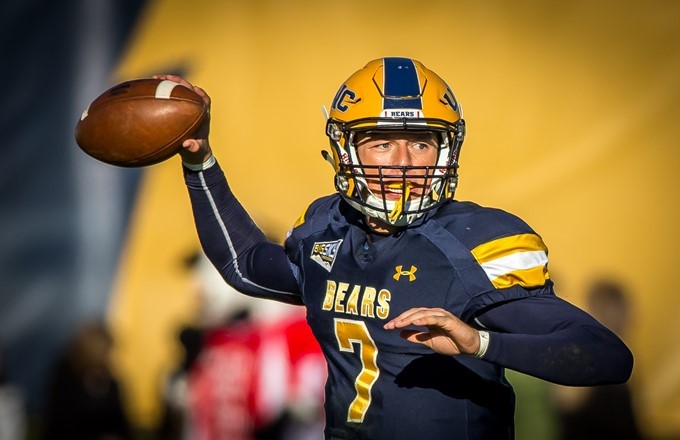
Height: 6’3”. Weight: 215lbs.
Pros: While his college career has been significantly hampered by injury, the traits are there to work with as a developmental project. He deserves a lot of credit to the resiliency and competitiveness to keep working through rehab and returning after multiple season-ending injuries. The one thing Knipp seems certain not to receive any red flags on will be his impeccable character and toughness. The Bears have had a dire win-loss record in recent years, but the blame doesn’t lie with Knipp. The team wins and some of his stats have been held back by teammates not at his level. Struggles on the O-line to give Knipp a clean pocket combined with receiver drops and balls batted in the air for interceptions are factors.
The NFLPA Collegiate Bowl player impresses with his upper body technique. The throwing mechanics features a quick motion and release, generating easy velocity. Able to throw off platform, his accuracy remains when not stepping into throws. Knipp is a fast mental processor and makes quick, reliable decisions. He takes full advantage of what the defenses give him, takes available yardage underneath, finds his checkdowns and hot reads as required, while taking shots deep when the opportunities are there.
Knipp has excellent overall ball placement and accuracy to all levels of the field. His film features some beautiful touch throws, including deep. There’s plenty evidence of high football IQ, instincts and overall feel for the position. While not an explosive athlete, Knipp shows enough mobility to run bootlegs, extend plays and escape the pocket.
Cons: The injury red flags are unavoidable and concerning. Three consecutive season-ending injuries, all early into each season and all to the same non-throwing shoulder, has seen Knipp’s college career extend into a 6th season in 2019. The disruptions have stalled his development and also results in being a little older than many rookies.
The lower body technique isn’t quite as ideal as his upper body. Knipp doesn’t step into his throws conventionally, though it doesn’t seem to affect his accuracy or velocity. Maybe the footwork just works for him and doesn’t require changing but is notable on film. While he was not helped by his offensive line, Knipp did struggle in limited playing time during the NFLPA Collegiate Bowl game. He had issues handling the heavy pressure he was under. In fairness, he looks much more composed in his game film.
Wrapping Up: While his college career has been significantly hampered by injury, the skill set is good enough such that there’s future starting potential should he reach his ceiling. That developmental upside makes Knipp worthy of a late round flier despite his durability troubles. His accuracy and natural feel for the position are above that of many more well-known QBs expected to be targeted in the latter portion of the draft. He drew plenty of interest at his pro day, positive signs that he’ll be coveted, even if it’s ultimately as a priority free agent.
28. Cam Gill, LB/EDGE, Wagner. Grade: 7th-HPFA
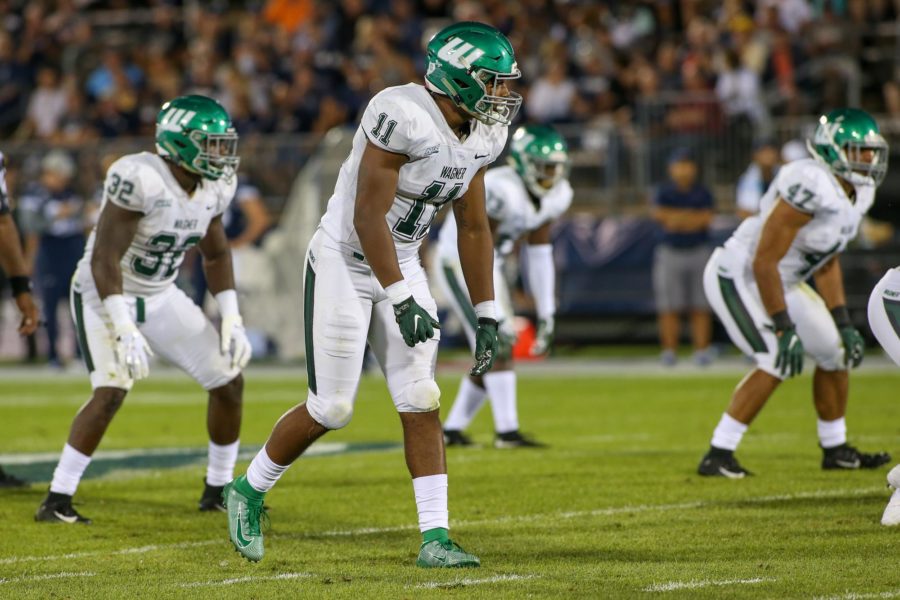
Height: 6’2”. Weight: 232lbs.
Pros: High motor energy-conduit of the Wagner defense. Gill is active and rangy, making an impact on multiple levels of the field. His versatility is one of his key selling points. Gill ought to be offer depth in various spots across the defense and a special teams demon. Working out at defensive end while also doing defensive back drills during his pro day speaks to the potential he has to contribute throughout the defense.
Undersized as an edge rusher, being used as an off-ball linebacker is a potential projection as well. Gill’s film and play style ought to translate well as a run-and-chase LB, with his play in pursuit a standout area of his game film. Gill’s strong senior season saw him total 60 tackles, 20 TFLs, 9.5 sacks, 2 PBUs and 3 forced fumbles.
He’s often able to make additional plays simply by outworking his opponents with second and third effort hustle stops. As a rusher, Gill shows nice upfield burst, bringing his relentless motor into early exchanges. He offers a useful inside counter move, using fast and violent hands as he cuts inside. A physical finisher, he consistently makes plays when in position, despite modest length. A good athlete, Gill took advantage of being able to go ahead with his pro day early. He ran a 4.58 dash, jumped a 34” vert, 10-2 broad and totalled 21 bench reps.
Cons: Gill’s production may be tricky to replicate at the next level. In addition to having a smaller frame and reach, he may also lack ideal flexibility. The college edge defender has quickness but looks a little tight hipped on film. Dipping and bending round the edge looks difficult, and may see him neutralized more often than not as a pro. Gill attended the NFLPA Collegiate Bowl and flashed, but also highlighted some of the struggles. During the game itself, he was caught out several times, getting overly aggressive and out of position, opening lanes for the ball carrier and exposing space. His positioning and reads could be more consistent, which hopefully comes with time.
Wrapping Up: This is a player who looks hungry for it, each snap played as if it’s his last. He might struggle to set the edge in run defense but will chase down ball carriers in pursuit and could find a role as a situational pass rusher. Gill has plus traits in his motor, good upper body technique and tackling ability, with the consistent production to back it up. He could sneak into the late rounds, with his versatility and special teams potential boosting his value. NFL Comparison: Kevin Pierre-Louis.
29. Alex Pechin, P, Bucknell. Grade: 7th-HPFA
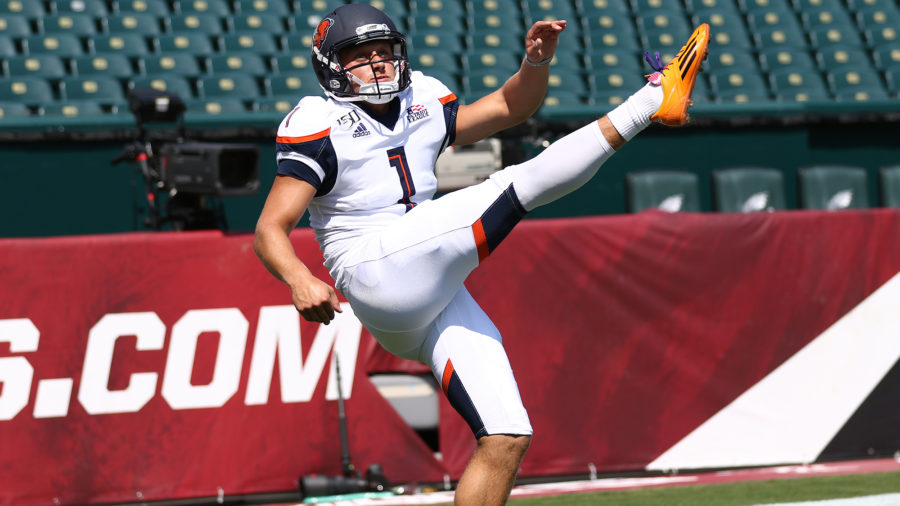
Height: 6’2”. Weight: 232lbs.
Pros: Beginning his film work with the 2019 season opener against Temple, Pechin’s first action saw him boom a 65 yarder with no roll adding to the distance, that pinned back one of the nation’s most dangerous returners in Owls star Isaiah Wright. That strong leg led to an elite-level average of 47.3 yards per punt for the season as a whole. Pechin is a traditional style punter with a strong leg. Working through his process efficiently, his catch-to-kick speed appears sufficient to minimize the risk of rushers blocking his kicks. In addition to the distance he can achieve when backed up in his own half, he shows touch on shorter fields to place the ball within 10 yards of the end zone. His accuracy on directional kicks to the corners and out of bounds also impress.
A former high school quarterback, the potential to execute on fake punt situations is an exciting possibility. He’s handled kick offs, as well as field goal and extra point duties as a kicker on occasion as well. The added value as an emergency kicker, as well as a holder on kicking units completes his varied contributions. The character and intangibles are off the charts to go with his play on special teams. The full list of awards and recognitions for his academic achievements and community work are too long to list for the 1st team All-American punter. Very much on the radar of the NFL, Pechin attended the East-West Shrine event.
Cons: The consistency of hang time on Pechin’s punts is something that has been noted elsewhere as a concern, and so will include it here under cons. Outside of that, Pechin appears polished at his position (while no expert on kicking specialists). With better athletes gunning him down off the snap, he might find a need to quicken his process slightly to compensate.
Wrapping Up: A handful of specialists are taken with draft picks each year on Day 3 (occasionally even on Day 2). Pechin has a chance to be one of those taken late to a team with a need at the position. Regardless of whether selected or going undrafted, Pechin has every chance of earning a starting role during camp.
Austin Edwards, EDGE, Ferris State. Grade: 7th-HPFA
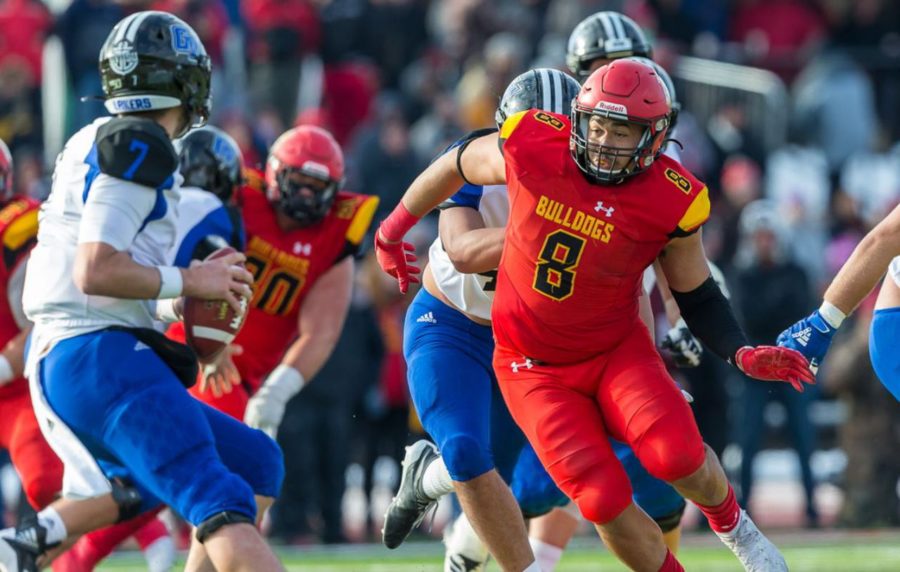
Height: 6’3”. Weight: 265lbs.
Pros: A Divison 2 All-American and defensive player of the year, Edwards overpowered the opposition he faced week to week. His impact in the backfield and against the run was reflected well in his production. He totalled 64 tackles, 17.5 TFLS, 10.5 sacks and a forced fumble in 2019. That was in spite of frequent attention from multiple blockers on a significant proportion of snaps. Though he measured in a touch shorter than his team-listed size, Edwards has a powerful sturdy build and enough length in his 33” arms.
The small school prospect shows good reactions off the snap with attacking intent from the go. He extends well into first contact, showing controlling power at the point of attack. Edwards regularly employs a direct approach, attacking into the body of his opposing blocker in his attempts at creating backfield disruption. His bull rushes were consistently impactful at the lower level, frequently driving O-linemen back deep into the pocket. There’s more to his game than just power, flashing some useful hand swipes when set loose to target the QB.
Cons: Though he physically dominated the Division 2 competition, Edwards will likely need to add more to his game for the significant step up to the pro level. The flashes of hand use are good to see, but there’s not much variety or technically savvy in his upper body technique.
Very much a developmental prospect, he could require some time and patience before being ready to take on a prominent role. It’s unlikely that he’ll become a consistent edge rusher, with limited flexibility to turn the corner. Edwards often tends to jump up a bit upright out of his stance. That doesn’t present many issues playing at Ferris State, but can’t afford to give up leverage against elite opposition in the NFL.
Wrapping Up: Edwards is an intriguing developmental prospect who may not be ready to contribute early. There’s upside worth pursuing however, with a good frame and power for the next level. The potential showed up in flashes during his time at the East-West Shrine event, both in practices and the game. A late round flier could pay off down the line.
CLICK THE LINKS BELOW TO NAVIGATE THE REST OF THE SMALL SCHOOL BIG BOARD!
PAGE 7: Top 150 Full Big Board
Feature Image Credit: Illinois State Athletics

